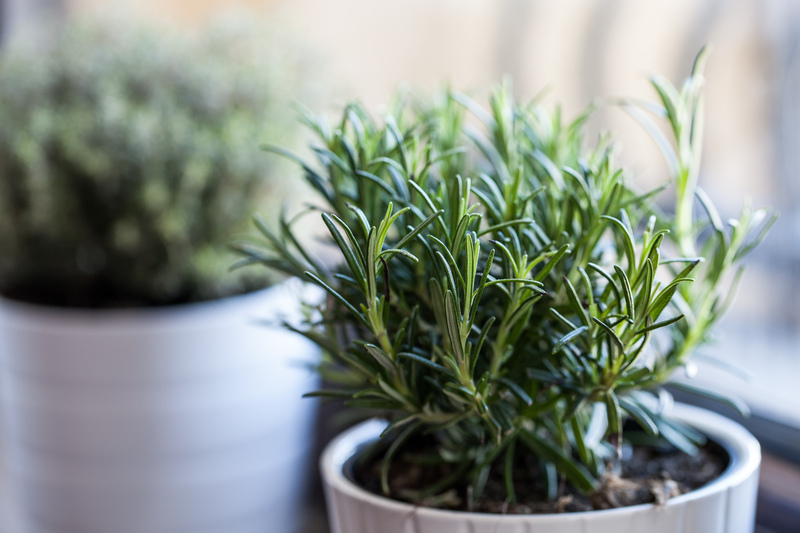Create a Warm Haven for Your Plants This Winter
Posted on 08/09/2025
Create a Warm Haven for Your Plants This Winter
When winter's chill settles in, plant lovers face a new challenge: How do you keep your beloved green friends thriving when outdoor temperatures plummet? Learning how to create a warm haven for your plants during winter is essential, whether your plants are cherished houseplants, container gardens, or sensitive outdoor specimens. This comprehensive guide will introduce you to practical, effective, and creative strategies to nurture your flora and help them flourish all season long.
Why Your Plants Need Extra Winter Care
Winter environments are often harsh for many types of plants. Both outdoor and indoor plants can suffer from:
- Cold temperatures that can freeze and damage roots
- Reduced daylight hours leading to insufficient photosynthesis
- Dry indoor air caused by heating systems
- Fluctuating humidity levels
- Chilly drafts and heat loss near windows or doors
All these factors can stress your plants, making them susceptible to pests, diseases, and slow growth. But with the right attention and winter plant protection techniques, you can help them weather the coldest months with ease.

Choosing the Right Location Inside Your Home
Maximize Natural Light
Light is essential for plant health year-round, but it's even more crucial in winter when days are shorter and sunlight is less intense.
- Place plants near south- or west-facing windows where possible. These spots typically get the most sunlight.
- Keep windows clean and clear to maximize the light your plants receive.
- Rotate your plants every couple of weeks to ensure each side receives sufficient sunlight.
Watch Out for Drafts
Cold drafts from windows or poorly insulated walls can quickly damage sensitive plants. Avoid placing them near frequently opened doors or windows that leak cold air.
- Check for drafty zones using a candle or your hand to detect airflow.
- Move plants to areas where temperatures remain stable, ideally between 60?F to 75?F (16?C to 24?C).
Humidity: The Often Overlooked Winter Element
Most plants, especially tropical varieties, crave moisture in the air. During winter, heated homes often have very dry air which leads to brown leaf tips and slow growth.
How To Increase Humidity for Your Indoor Plants
- Use a humidifier: This is the most effective and low-effort method. Place a small, adjustable humidifier near your plant collection.
- Group plants together: Plants release moisture as they transpire, so clustering them creates a micro-environment with higher humidity.
- Set plants on pebble trays: Fill a tray with pebbles, add water just below the stones' tops, and set pots on the tray. Evaporation boosts humidity around your plants.
- Mist leaves regularly: Use a spray bottle with room-temperature water to mist foliage, but avoid leaving leaves overly wet to prevent mildew.
Regularly monitor the air with a hygrometer and aim for humidity levels between 40% and 60% for most houseplants.
Temperature Management Tips for Plant Wellness
Keep Away from Heating Vents and Radiators
Heat sources can create hot, dry spots that stress plant tissues. Instead:
- Position plants several feet away from direct heat sources.
- Use insulating mats or decorative fabric pot covers to shield roots from temperature extremes.
Maintain Consistent Temperatures
Fluctuating day and night temperatures can shock your plants. Try to keep room temperature steady and avoid sudden cold snaps. Thermometers placed near plant areas are invaluable for monitoring their growing environment.
Bring Tender Outdoor Plants Indoors
If you adore tender perennials or tropical species summering outside, it's critical to bring them indoors before the first frost. Here's a quick checklist:
- Check for pests and diseases before moving plants inside. Quarantine newcomers for a few days to avoid spreading issues to established houseplants.
- Repot if roots have outgrown their containers.
- Gradually acclimate outdoor plants to indoor conditions over several days to reduce stress and leaf drop.
Design an Indoor Plant Sanctuary for the Cold Season
Creating a dedicated indoor growing space ensures your plants get everything they need during cold months.
Build or Buy Mini Greenhouses
Mini greenhouses or plant cabinets provide warmth, humidity, and wind protection:
- Portable greenhouses fit on tabletops and can be purchased online or created from clear plastic storage bins.
- Install grow lights inside cabinets or greenhouses for supplemental lighting.
Use Grow Lights to Boost Winter Growth
- Choose full-spectrum LED lights that mimic natural daylight.
- Hang lights 6-18 inches above plant tops and run them for 10 to 14 hours a day, adjusting based on the species' needs.
- Set grow lights on timers for consistency and to avoid forgetting to turn them on and off.
Watering Wisely: Adjust to Winter's Slower Growth
During winter, most plants enter a period of slower growth or even dormancy. Their water needs decrease dramatically.
- Reduce watering frequency. Let the top inch or two of soil dry before watering again.
- Ensure pots have drainage holes. Overwatering is a common killer in winter, as soggy soil leads to root rot.
- Water with room-temperature water. Cold water can shock roots and slow overall plant metabolism.
Tip: Use your finger to check soil moisture, or purchase a simple moisture meter for accuracy.
Feeding and Fertilizing: Less is More in Winter
Hold off on heavy fertilization. Most plants don't need as many nutrients during the cold months, as they aren't actively growing.
- Only feed winter-flowering plants or species that actively grow in the cold.
- For the majority, resume regular feeding in spring when growth picks up.
Protecting Outdoor Plants from Frost and Snow
Not all plants can come indoors, and garden beds or borders need special protection to survive harsh winter weather.
Mulch Matters
- Apply a thick layer (2-4 inches) of organic mulch like leaves, straw, or wood chips around the base of perennials.
- Mulch insulates roots from deep freezes and helps retain soil moisture.
Shield with Fabric or Cloches
- Cover vulnerable plants with breathable frost cloths, burlap, or old sheets on icy nights.
- Use cloches or plastic domes for individual plants. These act as mini-greenhouses for extra warmth.
Move Pots to Sheltered Spots
- Group outdoor containers against the south-facing wall of your home for added heat.
- Lift pots off cold ground using pot feet or bricks to prevent root chill.
- Wrap pots with bubble wrap or hessian for insulation.
Common Winter Plant Care Mistakes to Avoid
- Overwatering: Too much water and too little light equals root rot.
- Ignoring humidity: Dry air stresses most houseplants.
- Sudden moves: Shocking plants by relocating them abruptly from outdoors to indoors.
- Neglecting pest checks: Pests are less obvious in winter but can still cause major problems if unnoticed.
Winter Plant Care Quick Checklist
- Maximize light exposure and clean windows
- Keep plants away from drafts and heat sources
- Boost humidity with humidifiers or trays
- Monitor soil moisture--err on the dry side
- Avoid over-fertilizing
- Mulch and shield outdoor plants from frost
Creative Warm Haven Ideas for Apartment Dwellers
Space-constrained? Even a small city apartment can become a cozy winter retreat for your indoor garden with the following tips:
- Use vertical plant stands or window shelves for maximum natural light.
- Create a DIY greenhouse with plastic storage bins or a clear shower curtain and a tension rod.
- Hang grow lights over kitchen counters or bookcases to double as plant displays and room lighting.

Benefits of Creating a Winter Sanctuary for Your Plants
- Year-round beauty and greenery in your home
- Improved indoor air quality--plants help filter toxins from the air
- Emotional and mental health boost--nurturing plants reduces stress, especially during gloomy winter months
- Encourages a deeper connection with the natural world and sustainable living practices
Conclusion: Enjoy Thriving Plants All Year Round
With a little planning and attention, you can create a warm haven for your plants this winter, ensuring they not only survive but thrive until spring's return. Whether you have a sprawling greenhouse or a sunny apartment, these strategies will help you keep your greens healthy, lush, and vibrant in every season.
Start preparing now--move your plants thoughtfully, adjust watering habits, boost humidity, and provide adequate warmth and lighting. Your winter plant care efforts will be rewarded with beautiful living spaces and healthy, happy plants.
Ready to transform your home into a winter plant paradise? Share your plant haven photos or tips in the comments below, and let's inspire more plant lovers to keep their homes green and warm all year long!



